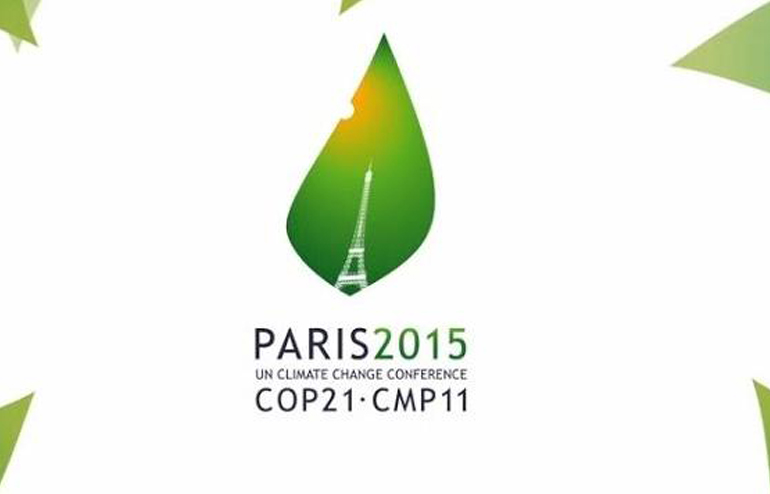As the year draws to a close, so do the multilateral forums for the year and the one most talked about is definitely the COP21. The inaugural session of the 21st conference of parties(COP 21) was held on the 30th November, 2015 in Paris and was attended by almost 150 Presidents, Prime Ministers and Head of governments. This is expected to go on till the 11th December, 2015 and a declaration is expected to be released on the same day. So, what exactly is the COP21?
The international political response to climate change began at the Rio Earth Summit in 1992 at Rio De Janerio in Brazil, where the Rio Convention included the adoption of the United Nations Framework Convention for Climate Change (UNFCCC). This convention established a framework for action aimed at stabilizing atmospheric concentration of Greenhouse gases (GHGs) to avoid anthropogenic interference in the climate system. The UNFCCC currently has a near universal membership of 195 nations.
The aim of the Conference of Parties or the COP is to review the convention’s implementation. The first COP took place at Berlin in 1995 and significant meetings since then have included COP3 where the Kyoto Protocol was adopted, COP11 where the Montreal Action Plan was produced, COP15 in Copenhagen where an agreement to success Kyoto Protocol was unfortunately not realised and COP17 in Durban where the Green Climate Fund was created.
Another key task of the COP is to review the national communications and emission inventories submitted by the parties. Based on this information, COP assesses the steps taken by the parties and the progress made in achieving the ultimate objective. It meets every year except when the parties decide otherwise. The COP meets in Bonn, the seat of the secretariat, unless a party offers to host the session. Just as the COP Presidency rotates among the five recognized UN regions – that is, Africa, Asia, Latin America and the Caribbean, Central and Eastern Europe and Western Europe and others – there is a tendency for the venue of the COP to also shift among these groups.
Having said that, let us now move on to talk about COP21 also called the 2015 Paris Climate Conference. What is it that has made everyone talking about the COP 21 this year:
- It is for the first time in over 20 years of UN negotiations that the parties are optimistic about adopting a legally binding and universal agreement on climate, with the aim of keeping global warming below 2 degree Celsius.
- The conference is being attended by leaders of 150 nations, with 40,000 delegates from 195 countries. And, all of them in one united voice are building up political pressure on the developed nations to reduce their carbon output and compensate the developing nations to achieve viable energy alternatives.
- This summit becomes all the more important when all the nations have submitted their intended nationally determined contributions (INDCs) after the successful adoption of Sustainable Development Goals (SDGs) at the United Nations in September this year in place of the Millennium Development Goals.
- Another special feature of the summit is the launch of Mission Innovation by President Obama and his French counterpart President Hollande ahead of the COP21. Elaborating a little more on this mission,
- Under this initiative all the parties (abiding nations) are required to double their budgets to attain clean energy R&D by 2020.
- Under Mission Innovation, international organisations and research centers will help the governments and private investors of various countries in being able to generate cheap and reliable renewable energy which will be reasonable enough to be used at a larger scale.
- Thus, the whole point of coming up with such a mission is “to make renewable energy affordable.â€
INDIA’S INITIATIVE AT COP21:
A similar initiative was taken up by India in the form of the launch of the INTERNATIONAL SOLAR ALLIANCE by the Indian Prime Minister and French President. Some of its noteworthy features are:
- The initiative invites all the countries lying fully or partially between the tropics of Cancer and Capricorn to join in and promote solar energy, the reason being that these are the countries that are host to sunlight for the maximum time in a year.
- A declaration on the same was adopted by 120 countries where they took a pledge to promote and develop solar energy.
- Various tasks that this alliance will pursue are cooperation in training, building institutions, regulatory issues, common standards, and investment including joint ventures.
- The alliance will function from the National Institute of Solar Energy (NISE) in Gurgaon. The Union government of India has announced the allotment of land and a sum of 30 million dollars for the same.
Here is an image to remember the same:
As the summit advances in the iconic city of Paris which is still under the shadow of the brutal attacks that the city faced a little over a fortnight ago, anticipations are growing in each and every part of the world about whether a consensus can be reached on the legally binding measures by the 11th December, 2015 which will mark the official closing of the conference for the year.
Will come back with the sequel soon. Stay connected…






















































